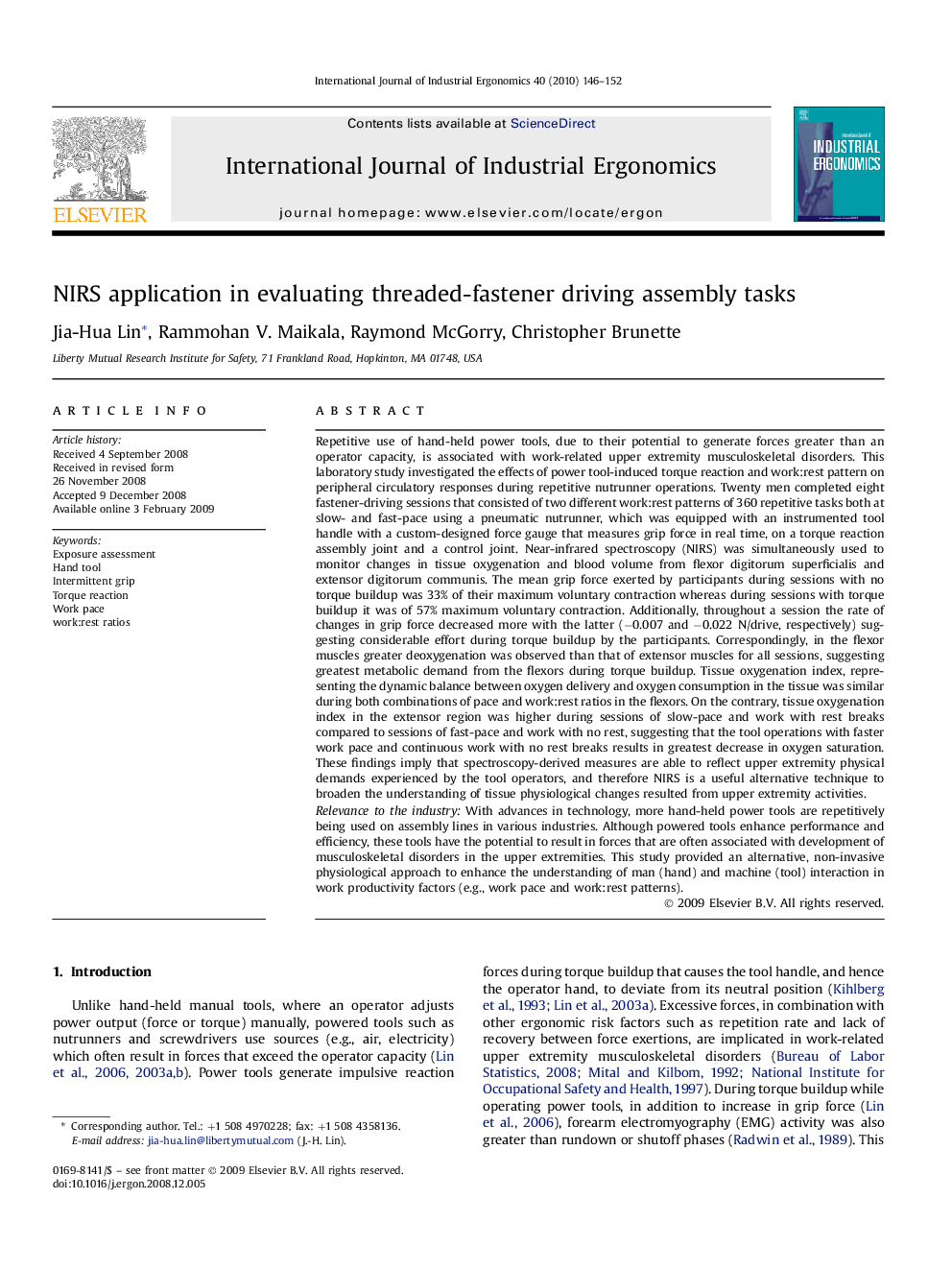| کد مقاله | کد نشریه | سال انتشار | مقاله انگلیسی | نسخه تمام متن |
|---|---|---|---|---|
| 1096463 | 1487459 | 2010 | 7 صفحه PDF | دانلود رایگان |

Repetitive use of hand-held power tools, due to their potential to generate forces greater than an operator capacity, is associated with work-related upper extremity musculoskeletal disorders. This laboratory study investigated the effects of power tool-induced torque reaction and work:rest pattern on peripheral circulatory responses during repetitive nutrunner operations. Twenty men completed eight fastener-driving sessions that consisted of two different work:rest patterns of 360 repetitive tasks both at slow- and fast-pace using a pneumatic nutrunner, which was equipped with an instrumented tool handle with a custom-designed force gauge that measures grip force in real time, on a torque reaction assembly joint and a control joint. Near-infrared spectroscopy (NIRS) was simultaneously used to monitor changes in tissue oxygenation and blood volume from flexor digitorum superficialis and extensor digitorum communis. The mean grip force exerted by participants during sessions with no torque buildup was 33% of their maximum voluntary contraction whereas during sessions with torque buildup it was of 57% maximum voluntary contraction. Additionally, throughout a session the rate of changes in grip force decreased more with the latter (−0.007 and −0.022 N/drive, respectively) suggesting considerable effort during torque buildup by the participants. Correspondingly, in the flexor muscles greater deoxygenation was observed than that of extensor muscles for all sessions, suggesting greatest metabolic demand from the flexors during torque buildup. Tissue oxygenation index, representing the dynamic balance between oxygen delivery and oxygen consumption in the tissue was similar during both combinations of pace and work:rest ratios in the flexors. On the contrary, tissue oxygenation index in the extensor region was higher during sessions of slow-pace and work with rest breaks compared to sessions of fast-pace and work with no rest, suggesting that the tool operations with faster work pace and continuous work with no rest breaks results in greatest decrease in oxygen saturation. These findings imply that spectroscopy-derived measures are able to reflect upper extremity physical demands experienced by the tool operators, and therefore NIRS is a useful alternative technique to broaden the understanding of tissue physiological changes resulted from upper extremity activities.Relevance to the industryWith advances in technology, more hand-held power tools are repetitively being used on assembly lines in various industries. Although powered tools enhance performance and efficiency, these tools have the potential to result in forces that are often associated with development of musculoskeletal disorders in the upper extremities. This study provided an alternative, non-invasive physiological approach to enhance the understanding of man (hand) and machine (tool) interaction in work productivity factors (e.g., work pace and work:rest patterns).
Journal: International Journal of Industrial Ergonomics - Volume 40, Issue 2, March 2010, Pages 146–152